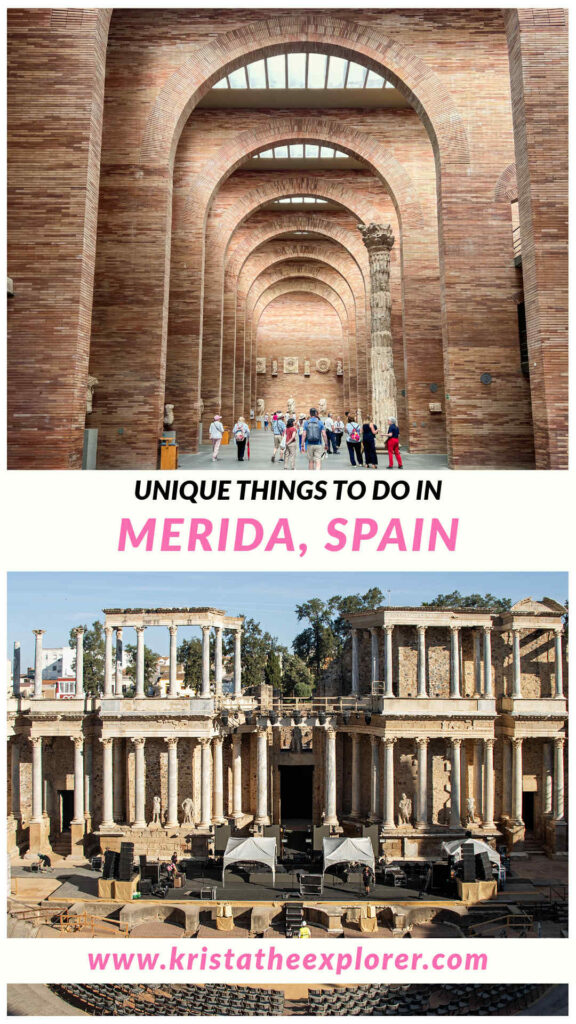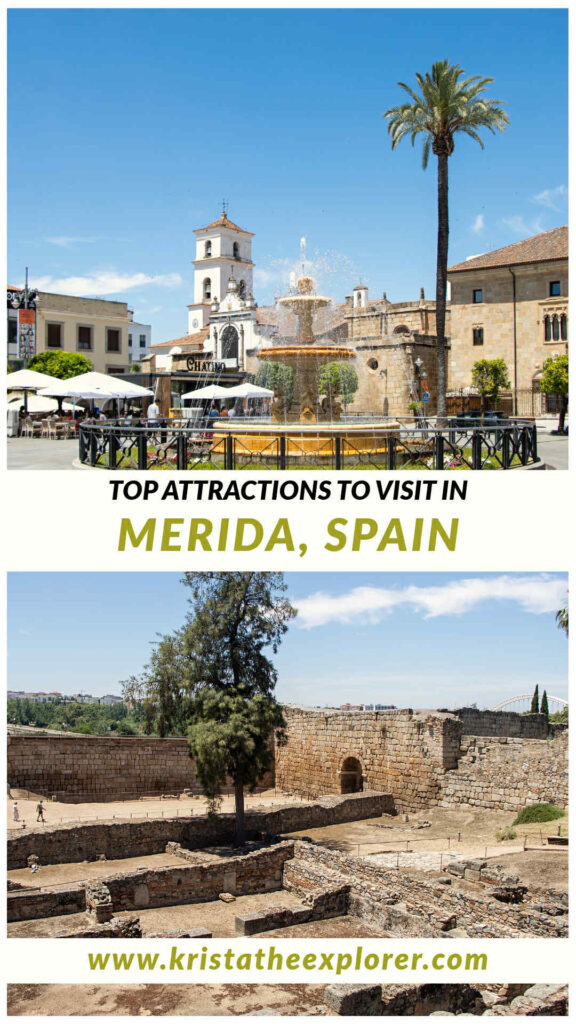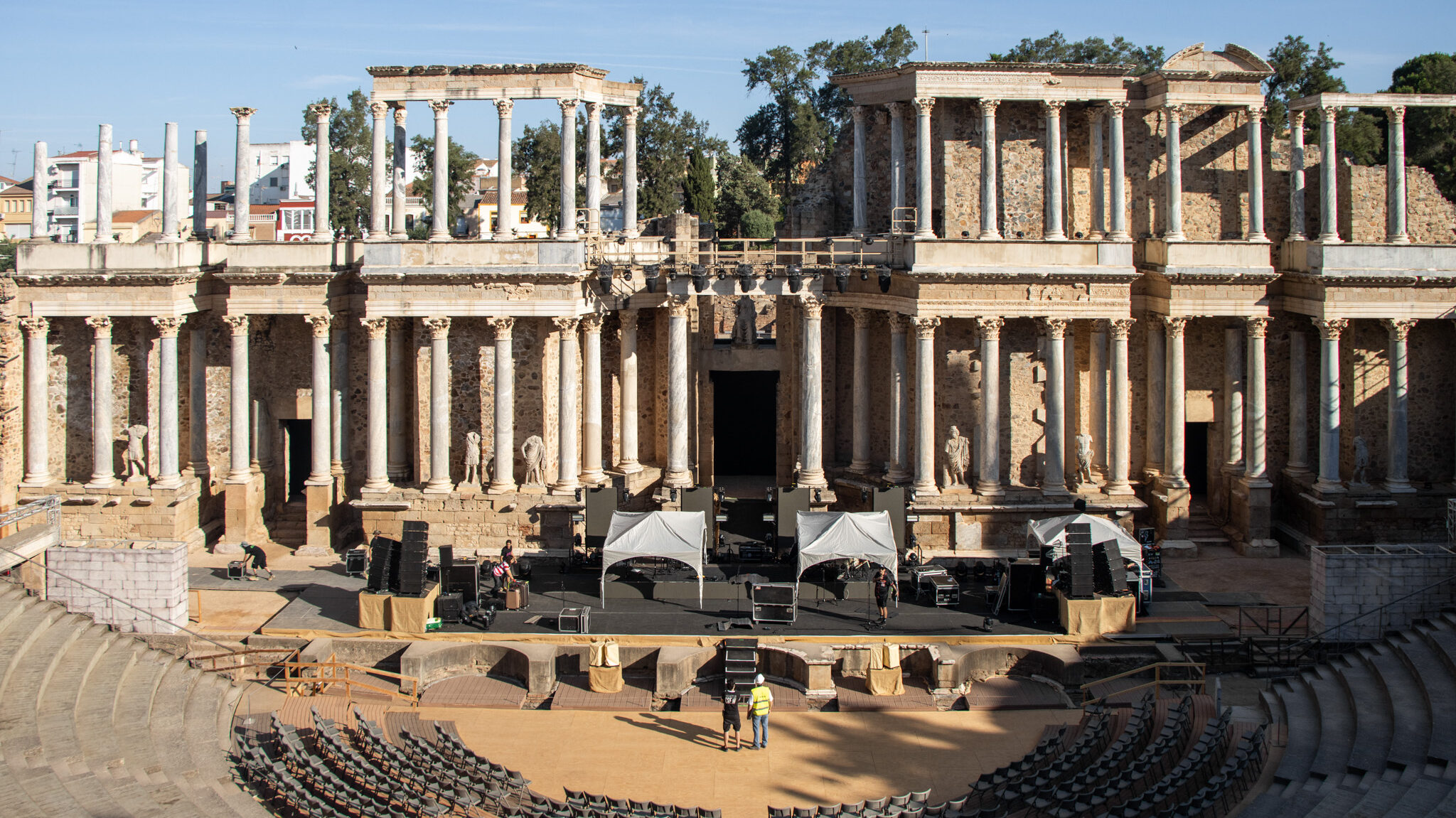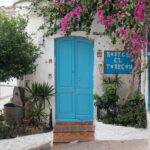In the heart of the region of Extremadura in Spain lies Merida – a beautiful UNESCO World Heritage Site that’s bursting with remnants of the Roman Empire. The city is often referred to as “The Spanish Rome”, and it’s very easy to see why from the moment you set foot in its historic city centre. There are some fascinating Roman ruins in Merida to visit, but beyond its ancient past, Merida also has an interesting set of medieval and Renaissance structures, as well as an abundance of lesser known hidden gems and traditional eateries. There are a lot of things to do in Merida for everyone, making it an ideal city to spend a day or more exploring.
The history of the city of Merida can be traced back to 25 BC, when it was named Augusta Emerita. The strategic importance of Merida led it to become the capital of what was then the Roman province of Lusitania, which is why it’s home to some of the most impressive examples of Roman architecture outside of Italy. So, if you find yourself travelling north of Seville and you’re looking for historic places to visit in Spain, you won’t find another city quite like Merida in terms of historically rich destinations.
Where to park in Merida
Merida is a very budget friendly city in Spain, and this carries over to parking fees as well. While the city does have a number of outdoor and indoor parking lots to choose from, the best option is Parking Cervantes. The spaces here aren’t too narrow and the price for several hours of parking is very reasonable. This parking garage in Merida is located just a short walk from key attractions such as the Templo de Diana and the Teatro Romano too. Its popularity means that it fills up quickly on weekends and during peak travel times though, so try to arrive early in the morning to ensure you have a spot.
Unique things to do in Merida
Teatro Romano
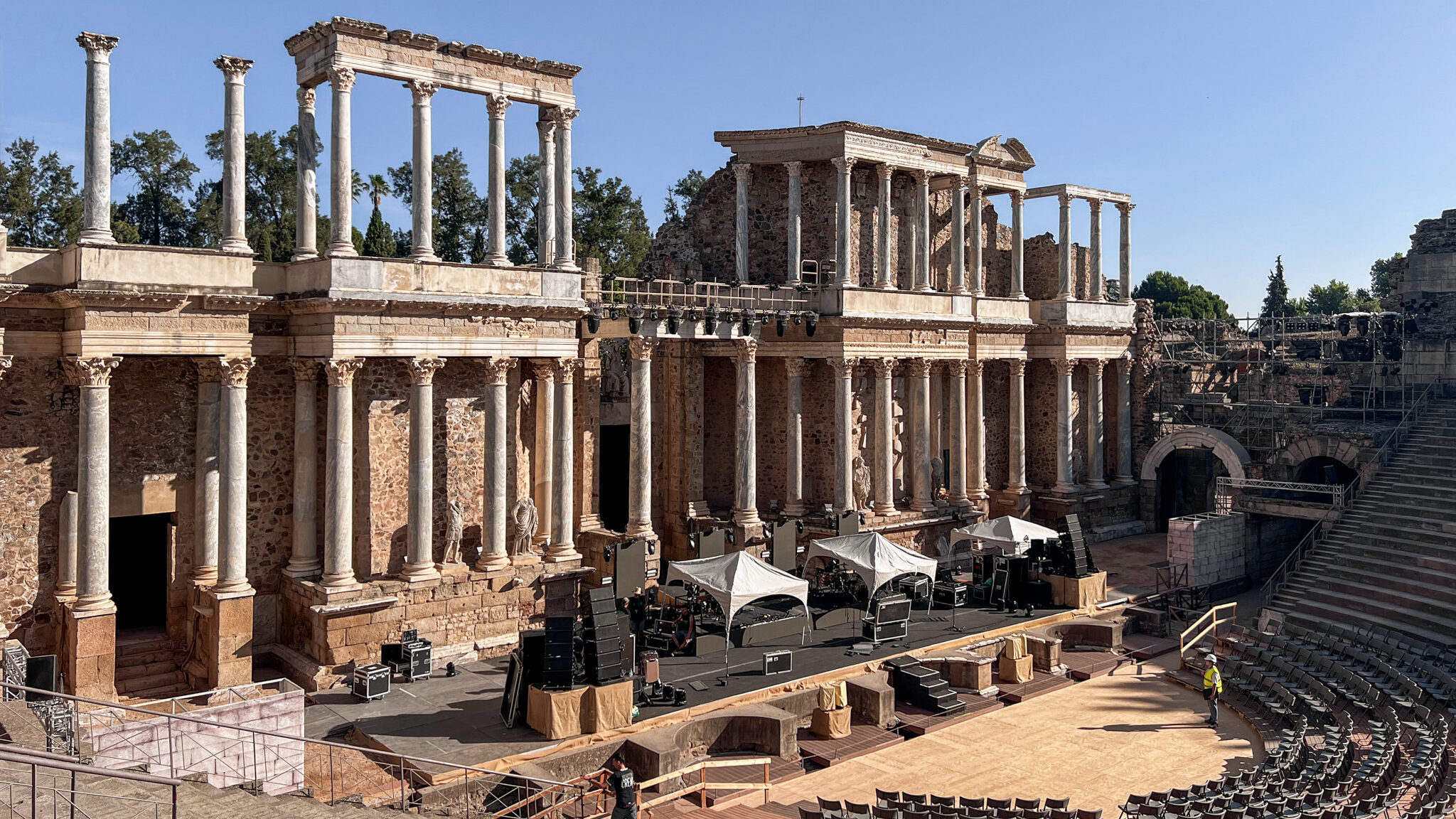
One of the top things to do in Merida is to visit the Teatro Romano. This ancient Roman theatre was built between 16-15 BC under the orders of Agrippa, who was the son-in-law of Emperor Augustus. At its height, it could hold around 6,000 people and it stood as one of the most impressive theatres in the Roman Empire. The Teatro Romano in Merida would have been used for dramatic performances, such as those written by Roman and Greek playwrights, and today it’s still in use for various events.
The theatre later became abandoned and it wasn’t until the 20th century when an excavation revealed the structure again. When you visit the Teatro Romano, I’d recommend arriving when it opens, which is before the tour groups start, so you’ll have it almost all to yourself for a short period of time. I’d also suggest buying the Historical-Archaeological Ticket which costs just €17 and it will grant you access to nine attractions in Merida, including the theatre.
Anfiteatro Romano
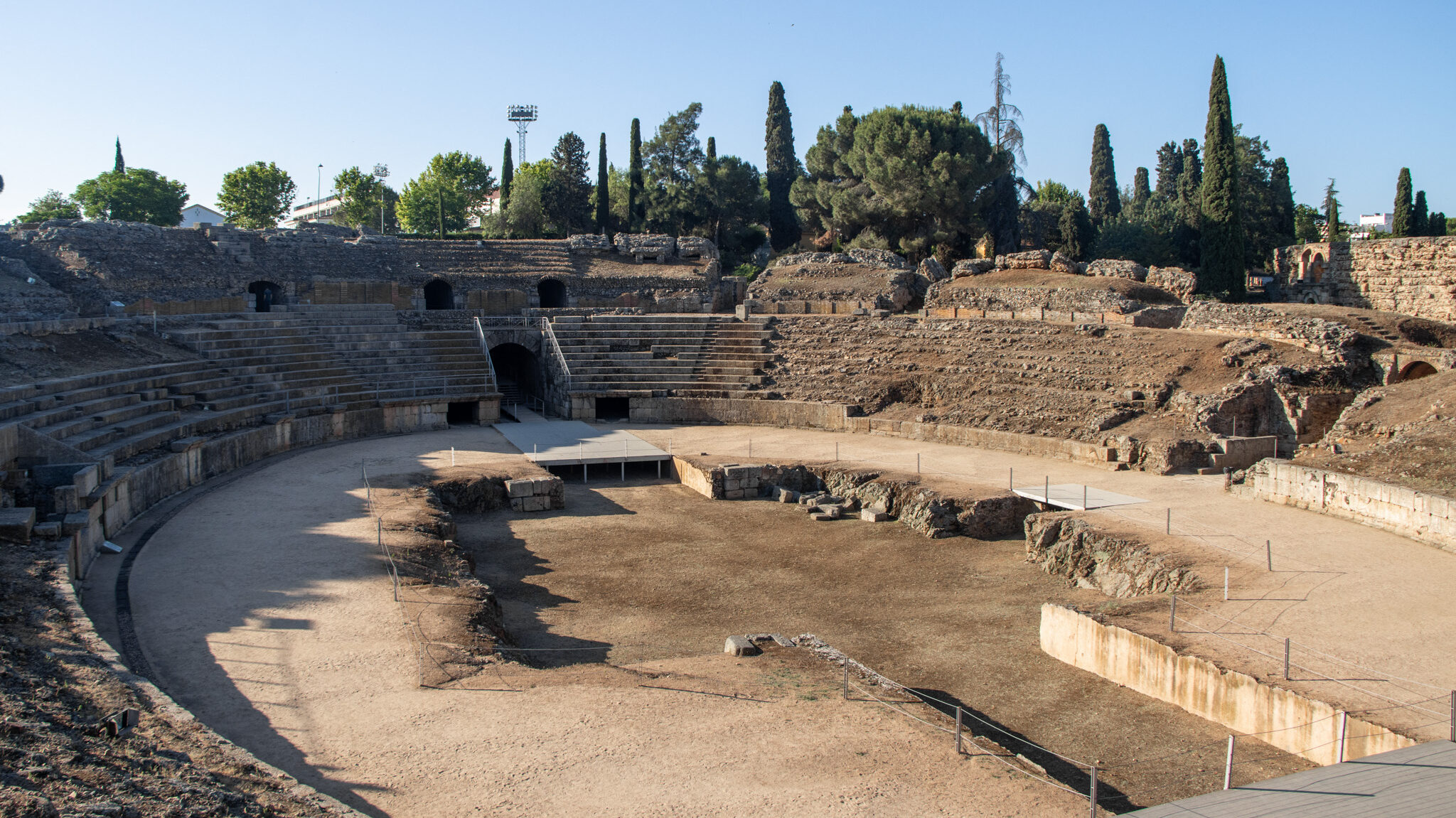
Located in the same archaeological complex as the Teatro Romano is the Anfiteatro Romano, which you’ll actually come across before the theatre. This Roman amphitheatre was opened in 8 BC and it was designed for gladiator fights and other physical forms of entertainment. Approximately 15,000 people could be seated here at one time, which shows just how popular this form of entertainment was.
Visitors today can access all parts of the amphitheatre, including the seating areas, the subterranean levels where fighters and animals would prepare for combat, and the ground floor of the stadium. The Anfiteatro Romano connects directly to the Teatro Romano, so you can cross off two things to do in Merida at once. If you’d like to take a guided tour of these attractions in Merida, you can enquire at the ticket office.
Casa Romana del Anfiteatro
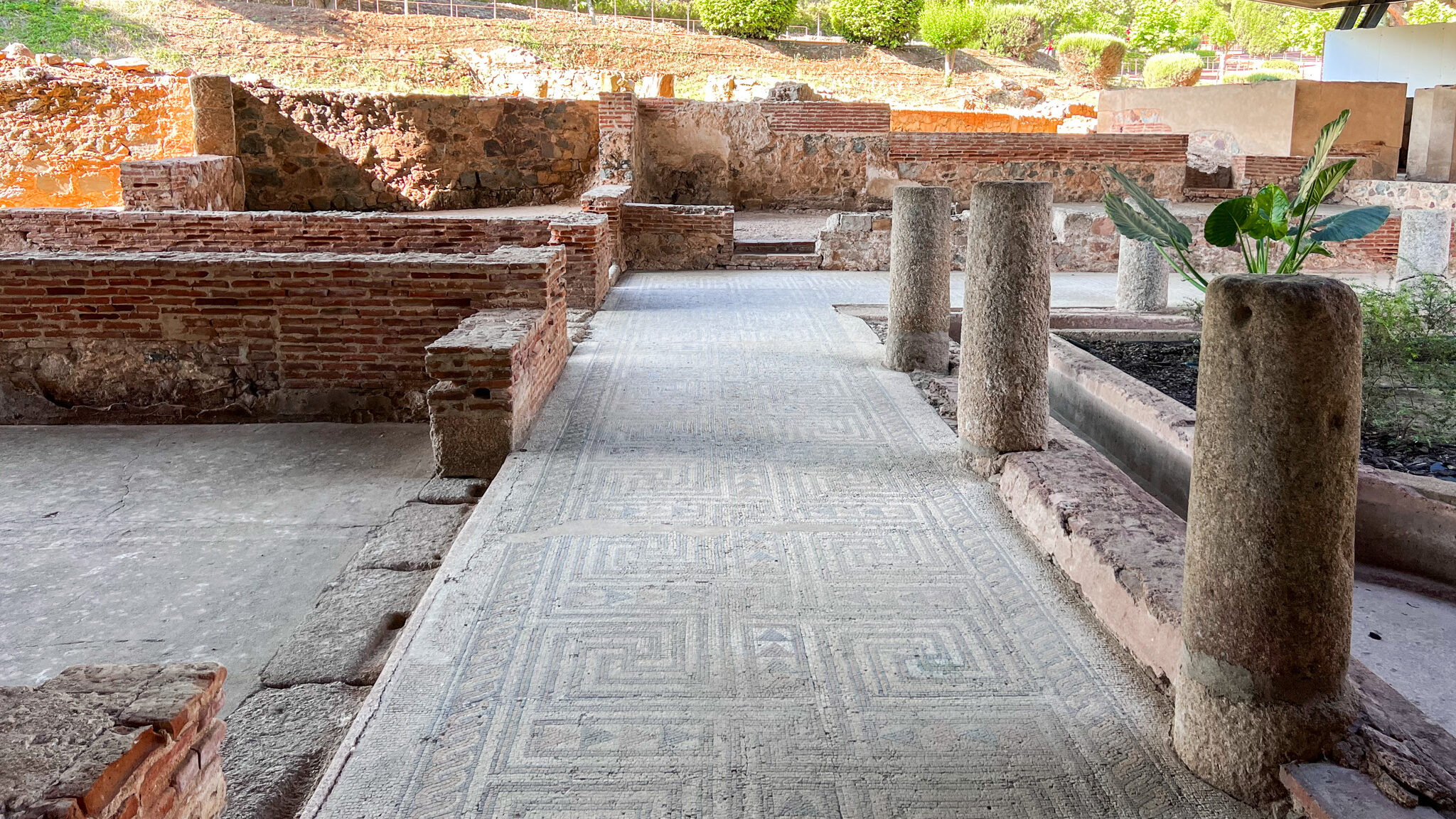
There are many things to do in Merida that revolve around the city’s ancient Roman history. One attraction that’s often overlooked is Casa Romana del Anfiteatro. This Roman house once belonged to a wealthy family and today visitors can walk through what remains of this typical domestic structure from ancient times. Casa Romana del Anfiteatro offers a rare look into a detailed floorplan of this type of luxurious residence, with painted walls and original floor mosaics still beautifully preserved.
This attraction in Merida is included in the Historical-Archaeological Ticket and it sits opposite the entrance to the theatre and amphitheatre. If you’re interested in archaeological sites, this is one place you’ll want to add to your list of things to do in Merida.
Museo Nacional de Arte Romano
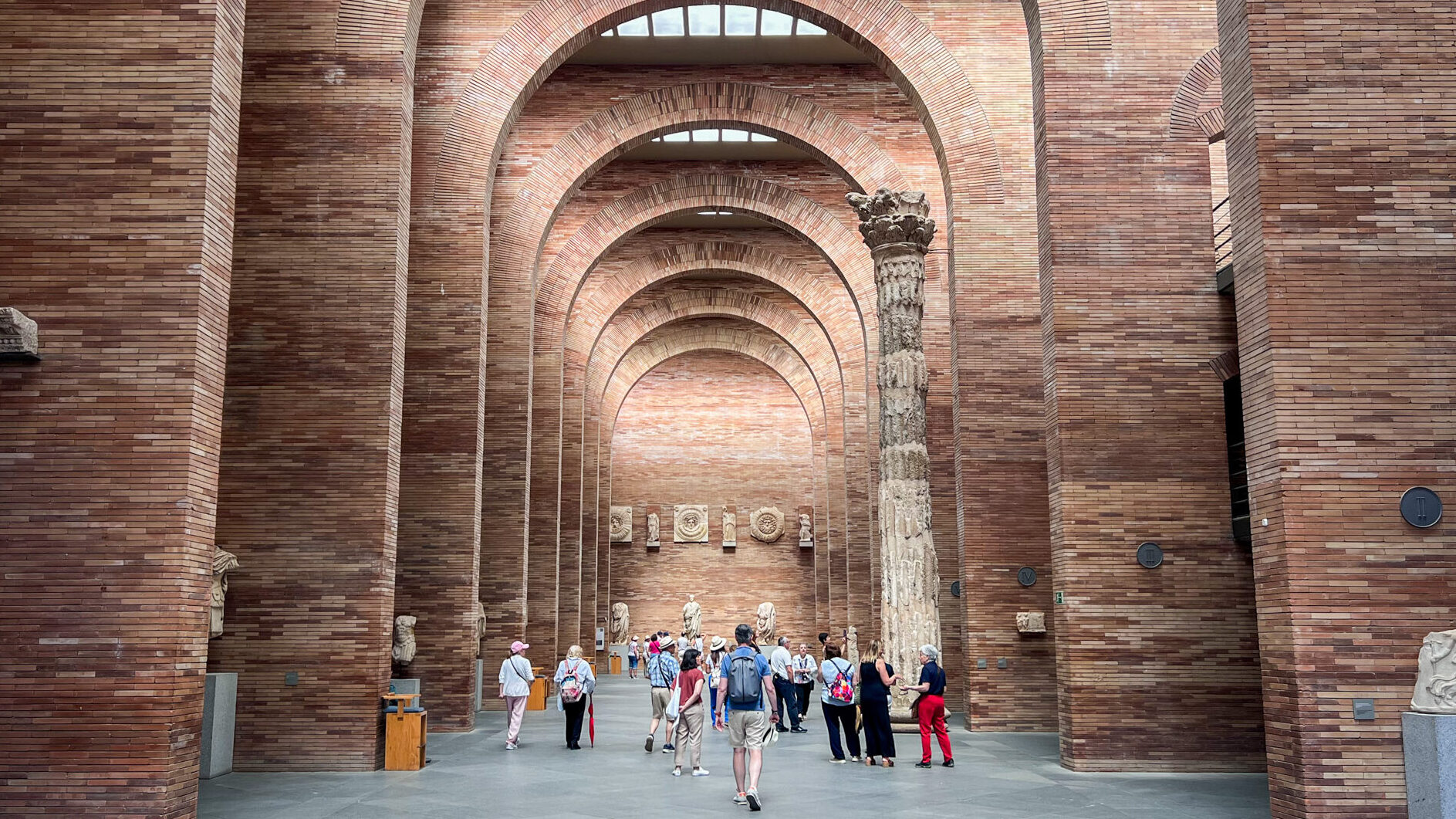
Museo Nacional de Arte Romano is one of the most unique museums in Spain. It was built over Roman ruins and the design is meant to make people feel like they’re walking through a Roman basilica. The Roman-style arches used in the main section of the museum are immense, offering plenty of natural light to showcase the large number of artifacts found in Merida and nearby areas.
If you happen to be visiting Merida on the weekend, the museum is free to enter after 2pm and it’s also free on specific holiday days. Visiting this museum is one of the best things to do in Merida, and it’s located across the road from the Teatro Romano too, so it’s very easy to add to your schedule.
Termas de San Lazaro
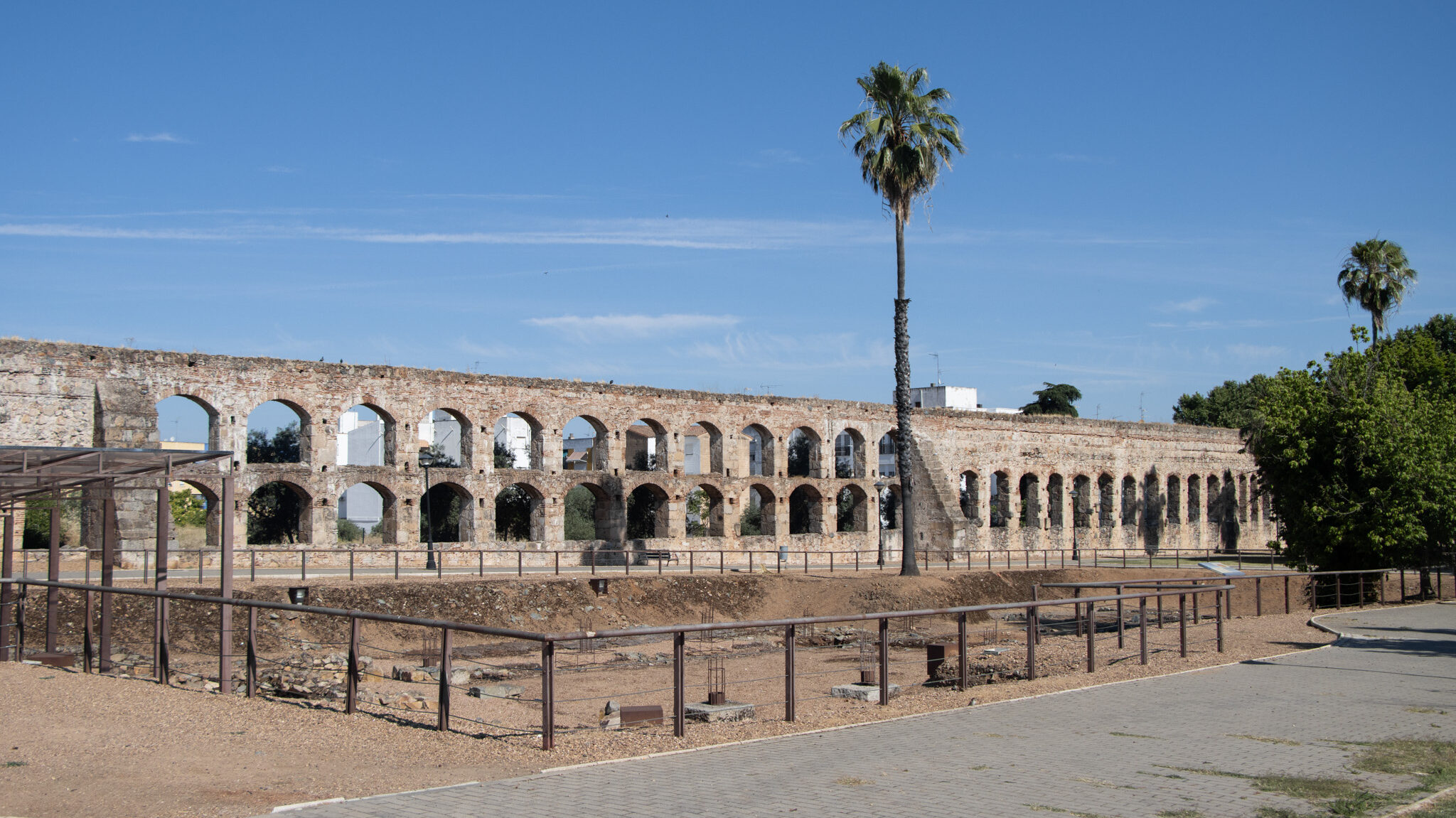
If you’re looking for free things to do in Merida, the Termas de San Lazaro is a good place to start. It’s located close to the Circo Romano de Merida, with both the Acueducto de Rabo de Buey and the Acueducto de San Lazaro sitting behind it. The remains of these public Roman baths were once part of a larger complex, and they included a sophisticated heating system that helped to heat the different rooms and pools.
The thermal baths were built in the 1st century AD, and thanks to archaeological excavations, visitors can now clearly see their foundations and get a good idea of the overall layout of the baths.
Circo Romano de Merida
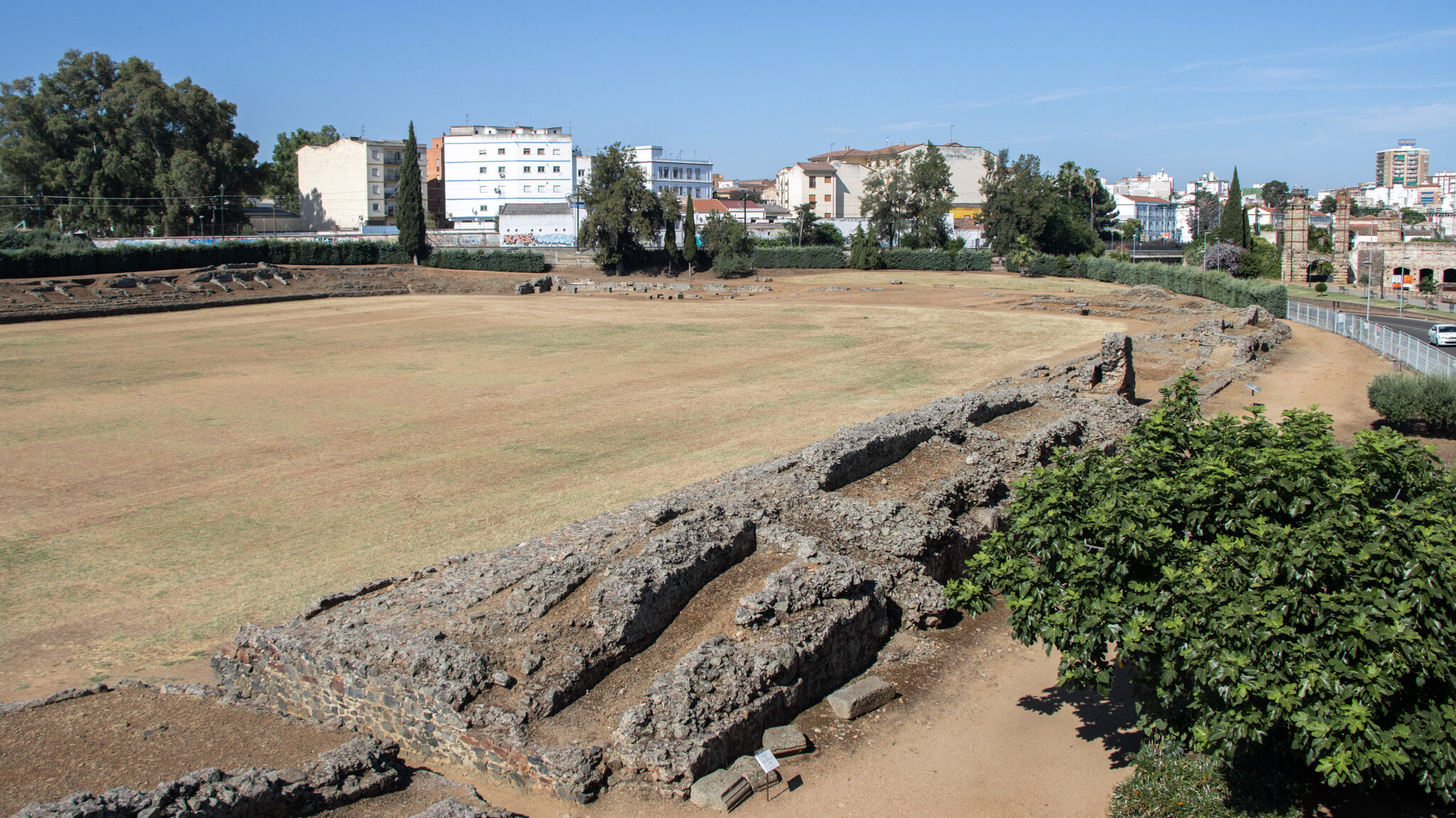
Those of you who have been left slightly underwhelmed with the remains of the Circus Maximus in Rome will be pleasantly surprised by the Circo Romano de Merida. It’s one of the best preserved Roman Circuses from the ancient world and it was built around the 1st century AD. The Circo Romano was predominantly used for chariot races and it was designed to hold up to 30,000 people. Unlike the Circus Maximus in Rome, the Circo Romano de Merida still has much of its layout intact, so you can get a better understanding of the site and the sheer scale of it.
The Circo Romano de Merida is included in the Historical-Archaeological Ticket for just €17, or you can purchase a single entry ticket for the complex at the ticket office. Although this is one of the top things to do in Merida, it’s never crowded so you can visit it at any time of the day and still enjoy this ancient site.
Casa del Mitreo
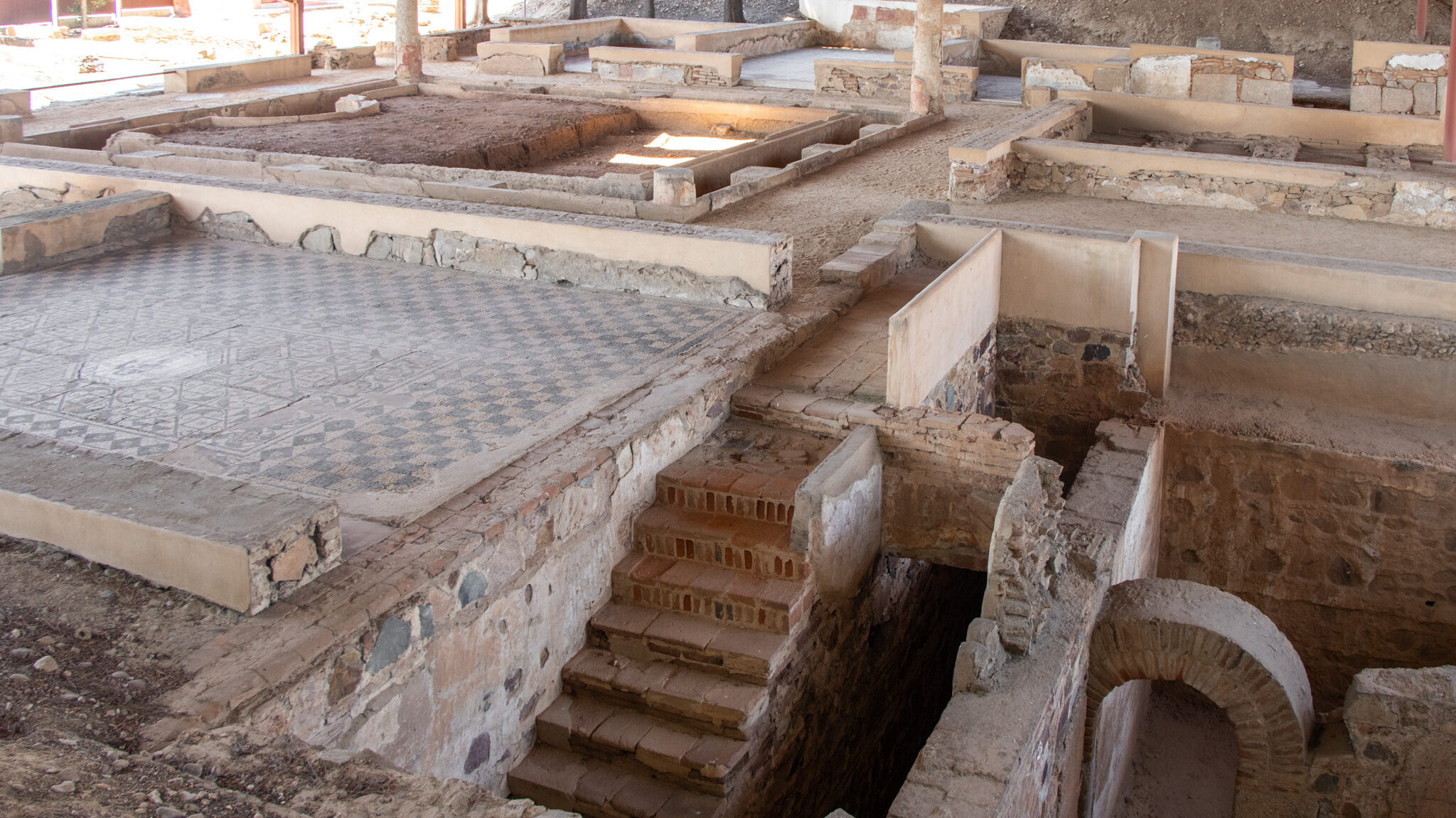
Casa del Mitreo is also included in the Historical-Archaeological Ticket, but it’s situated outside the ancient city walls so it takes a little longer to get to than most attractions in Merida. The remains of this once luxurious Roman villa most likely belonged to a noble family, and the Cosmological Mosaic found in its remains would suggest that the family was associated with the Mithraic cult. There are a lot of interesting parts of this archaeological site in Merida to see, so it definitely shouldn’t be kept off of anyone’s list of things to do in Merida.
In the same complex as Casa del Mitreo is the Area Funeraria de Los Columbarios. This ancient Roman necropolis is less interesting to look at than Casa del Mitreo, but it offers a glimpse into funerary practices between the 1st and 2nd centuries, so it’s worth the short walk to look at briefly.
Templo de Diana
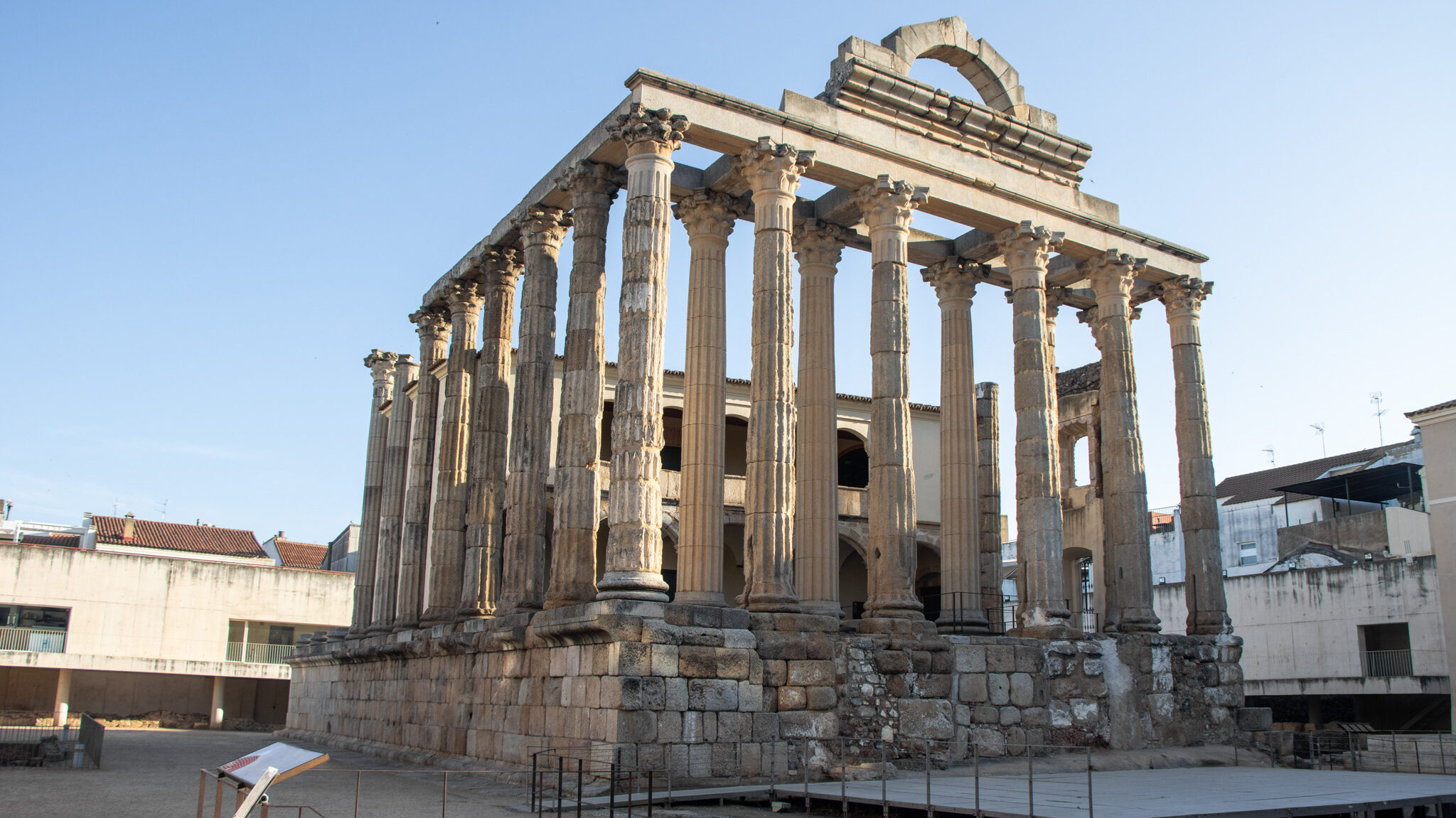
One of my favourite things to do in Merida is to visit Templo de Diana. It was built in the 1st century AD as part of the city’s forum, with stand-out features such as the 16 Corinthian columns still standing tall. Unlike other ancient sites in Merida, the Temple of Diana was used for different purposes over the centuries. In the 16th century it was turned into a Renaissance palace, for example, which has now been turned into a small museum.
The exterior of the temple is free to access, but you’ll need to pay to go inside unless you have the Historical-Archaeological Ticket. The information inside is only available in Spanish, but there’s a nice balcony on the top floor of the palace that gives you a closer look at the impressive columns of the temple.
Portico del Foro

Just a short walk from the Templo de Diana is the Portico del Foro. These ancient Roman ruins in Merida were once part of the civic centre and would have been surrounded by a large public square. The ruins have been partially reconstructed to give visitors a sense of its original size and grandeur, so although it’s not the most popular site in Merida, it’s still worth stopping at for a few moments. If you’re short on time, I’d recommend taking a guided tour of Merida which often takes you inside the ruins of the Portico del Foro.
Wander around the historic streets of Merida
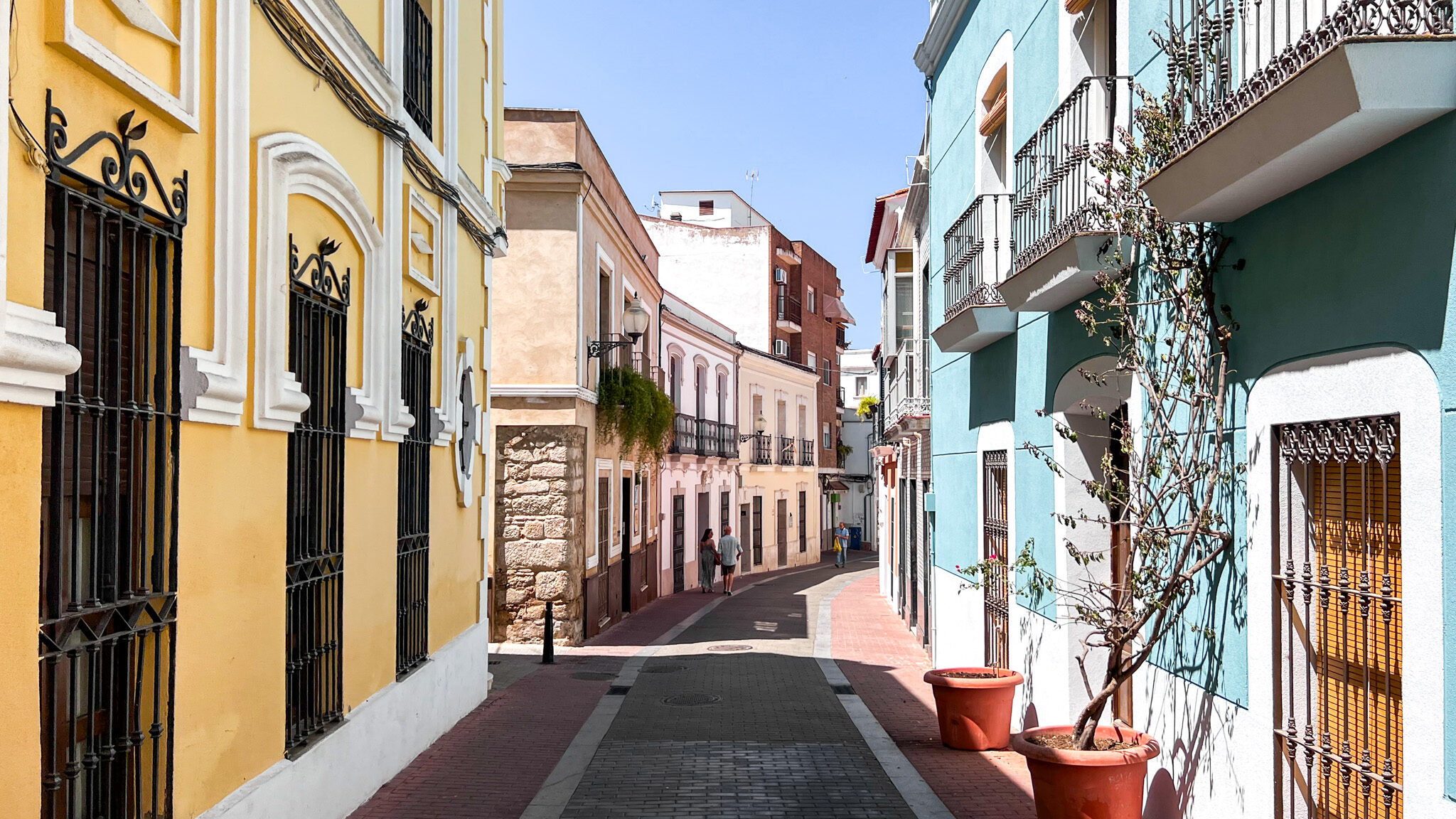
Yes, there are a lot of things to do in Merida, especially if you’re only in the city for a day. But, if you do find yourself with spare time on your hands, nothing quite beats wandering around the historic streets of Merida. Many streets in the historic city centre don’t have major attractions on them, but you may come across a nice place to eat or local shops selling handmade goods to take home with you. There are also many streets worth taking photos of in Merida, so pack some good walking shoes!
Arco de Trajano
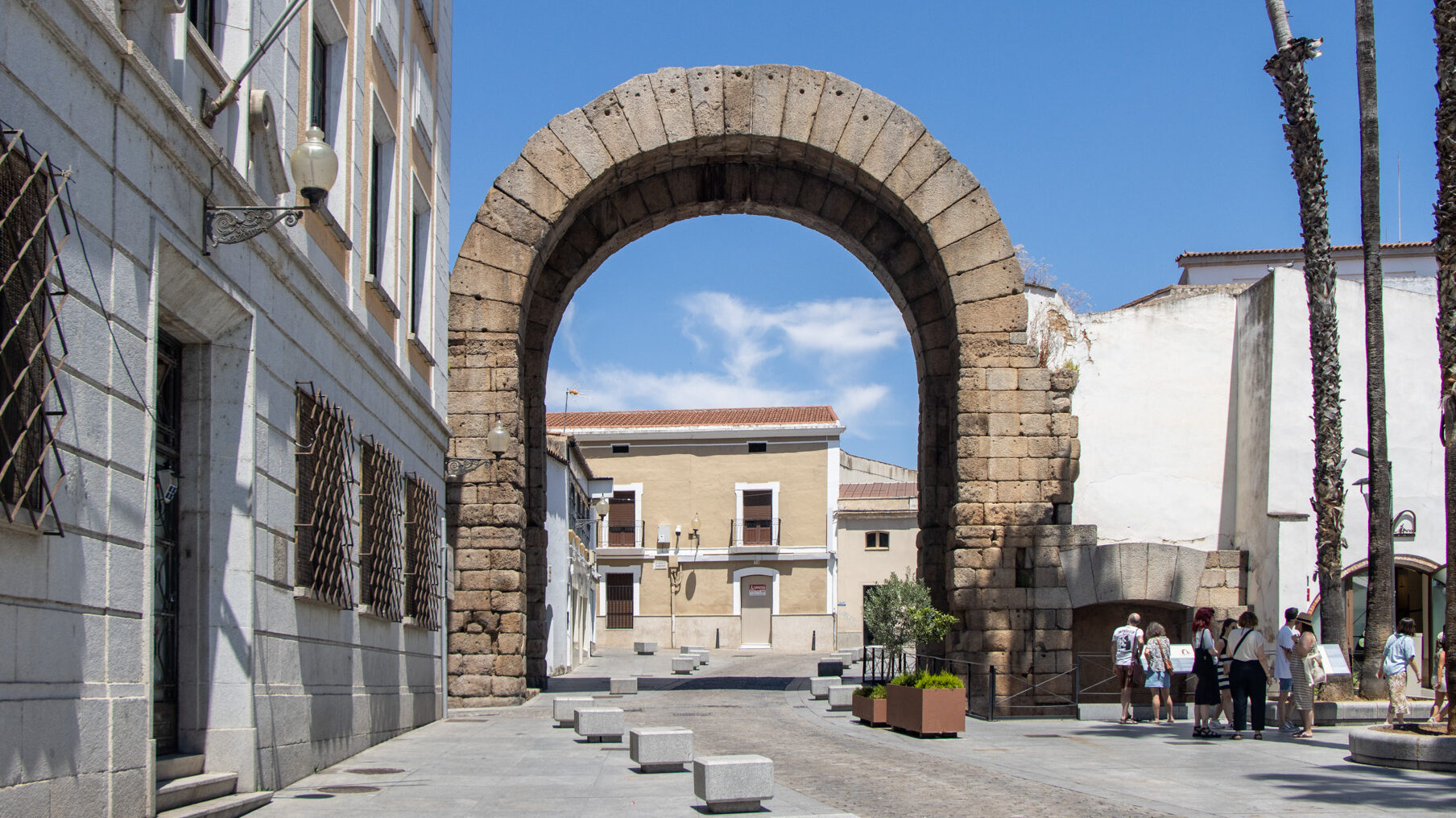
Arco de Trajano may give you the impression that this arch was built in honour of Emperor Trajan, but that’s not the case. This arch acted as a grand entrance to the sacred part of the provincial forum, measuring over 15 metres tall. It was built around the 2nd century AD and it originally had statues and colonnaded streets around it. Today, the arch sits among modern buildings and its imposing presence makes it one of the most photographed spots in Merida, and a top attraction to visit.
Near the Arco de Trajano is the Hospital of Jesus Nazareno (now a hotel in Merida) which was founded in the 17th century. It was run by a religious brotherhood who cared for the sick, poor, and pilgrims. In front of the building is Plaza de la Constitucion, which is a nice spot to relax in the shade too.
Area arquelogica de Morerias
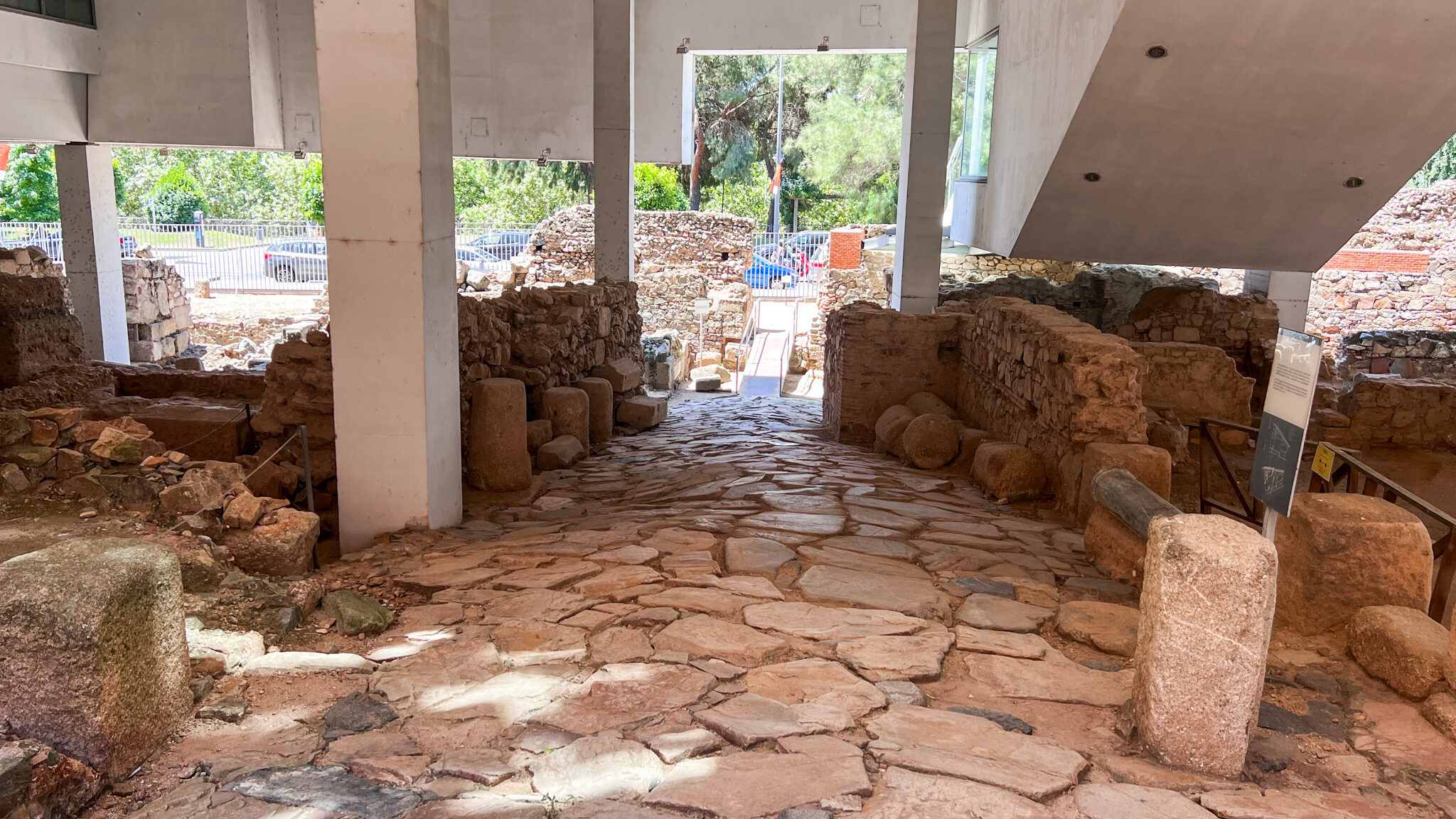
Also included in the Historical-Archaeological Ticket is the Area Arquelogica de Morerias. This unique archaeological site in Merida reveals how the city continued to grow from the Roman period through to the Visigothic and Islamic periods. The site features interpretive panels (in Spanish only) as well as walkways so you can get very close to the Roman roads and the remains of architecture from different periods.
The evidence found at this site shows that Merida was constantly adapted by different cultures rather than abandoned like so many other ancient cities are. Area Arquelogica de Morerias is one of the only locations in Spain where you can see 1,500 years of history all in one place.
Puente Romano de Merida
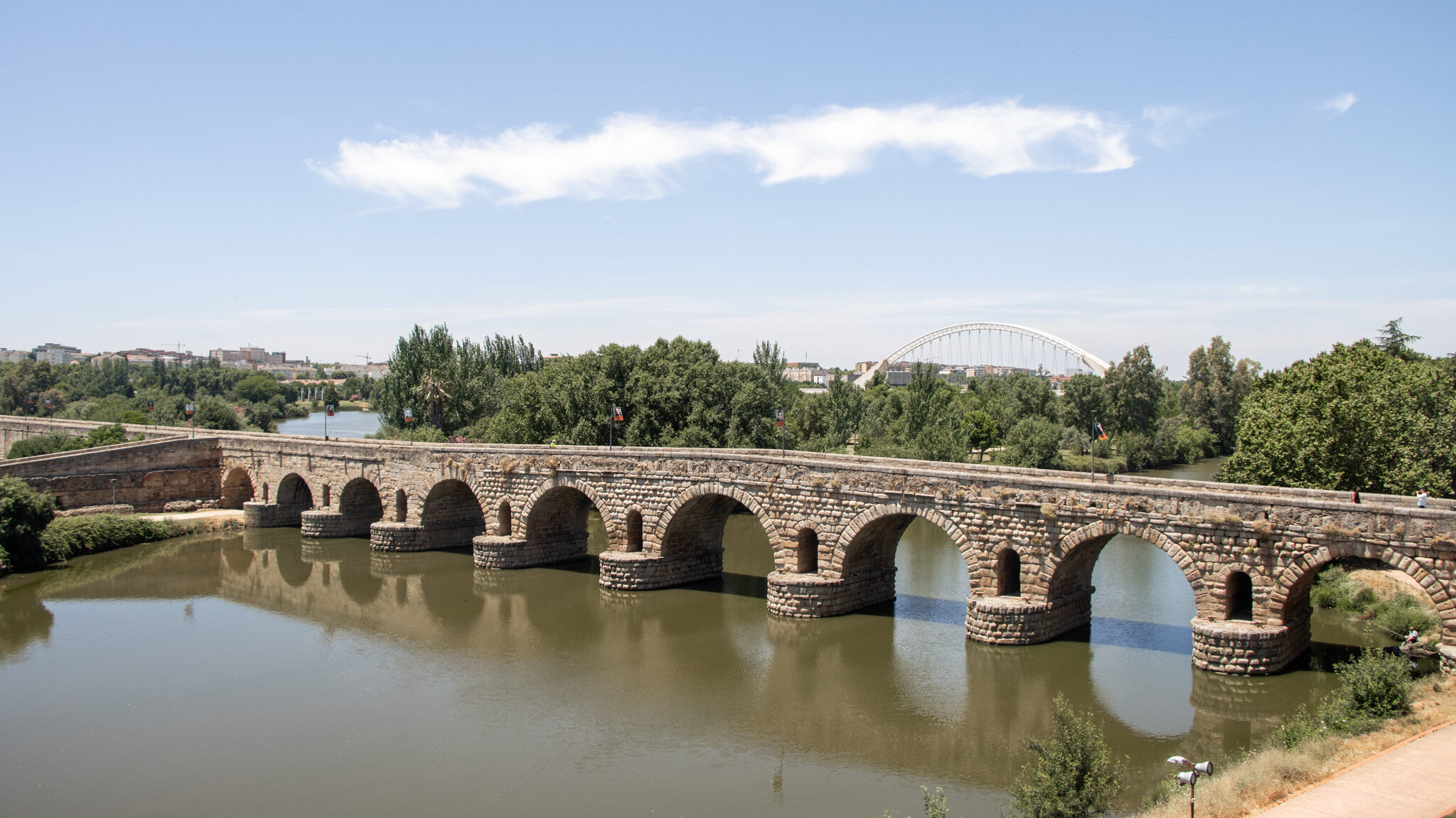
One of the top things to do in Merida for history lovers is to walk across Puente Romano de Merida. This beautiful Roman bridge was originally built in the 1st century AD, during the reign of Augustus. The arches of the bridge have been modified over time, and today the bridge is fully pedestrianized so you can enjoy walking here at your leisure. Puente Romano de Merida offers the perfect view of the walls of the Alcazaba as well as the Guadiana River.
There’s no shade on this bridge though, and the temperatures in Merida can reach extremely high numbers in the summer months. The best time to visit the Puente Romano de Merida is either at sunrise or sunset if you want to catch the perfect lighting and not overheat.
La Loba Capitolina
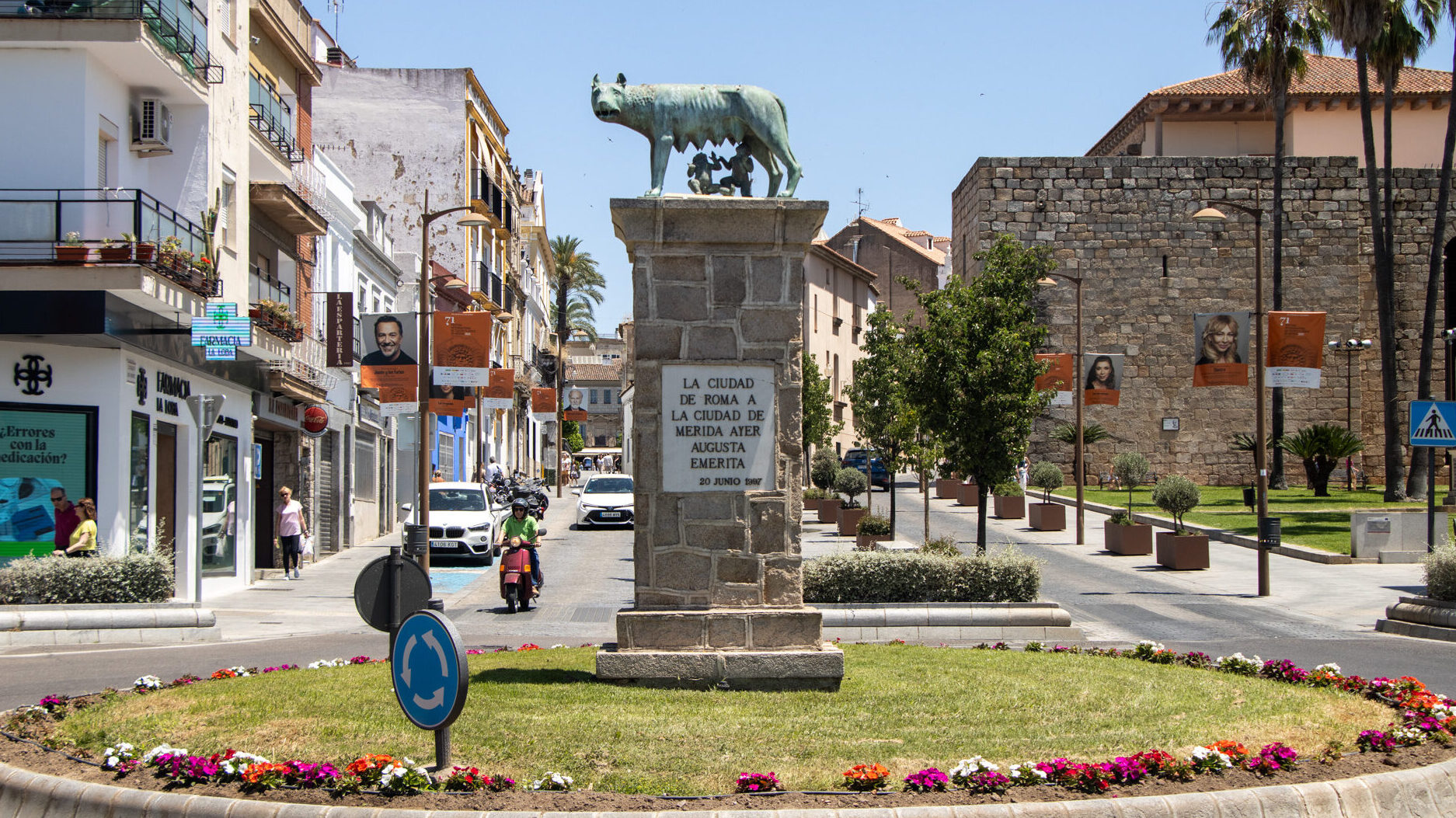
Sitting at the entrance to the Puente Romano de Merida, and just outside the walls of the Alcazaba, is La Loba Capitolina. If you’ve spent a few days in Rome, you may have come across this iconic statue in the Italian capital. The one in Merida is a bronze replica of the she-wolf, and it was gifted to the city by Rome in the 20th century to symbolize their shared heritage.
The Capitoline Wolf is a symbol of the foundation myth surrounding Rome, and it proudly sits on a pedestal in the midst of the imperial walking route of Merida. Snapping a photo of La Loba Capitolina may not be one of the top things to do in Merida, but it’s a must-see if you’re planning to see Roman attractions in the city.
Alcazaba de Merida
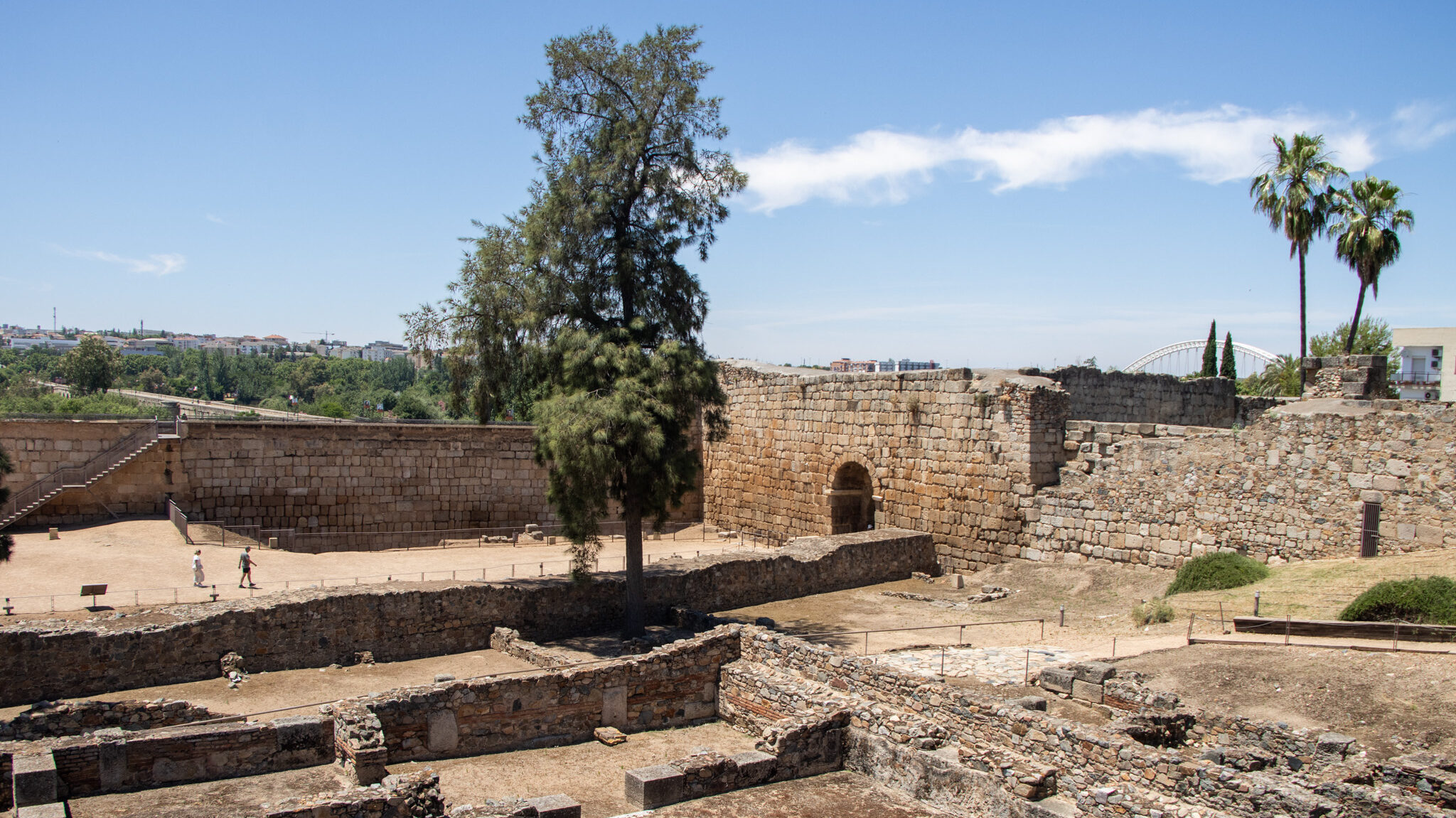
A big highlight for many people visiting Merida is the Alcazaba de Merida. The fortress was built in 835 AD, making it one of the oldest Islamic fortresses in Spain. It was constructed on top of Roman ruins, some of which have been excavated and are on display in the centre of the Alcazaba, and they used materials from nearby Roman structures to give the fortress a unique blend of architecture.
As you make your way around Alcazaba de Merida, make sure you climb up to the top of the walls for panoramic views of the city as well as the Roman bridge below. Most of the fortress is a hollow shell of what it once was, but there are still some unique components of it that are worth looking at. I’d highly recommend not visiting at midday though, as there are limited shaded areas which makes it much less enjoyable to walk around. This site is also included in the Historical-Archaeological Ticket.
Plaza de España
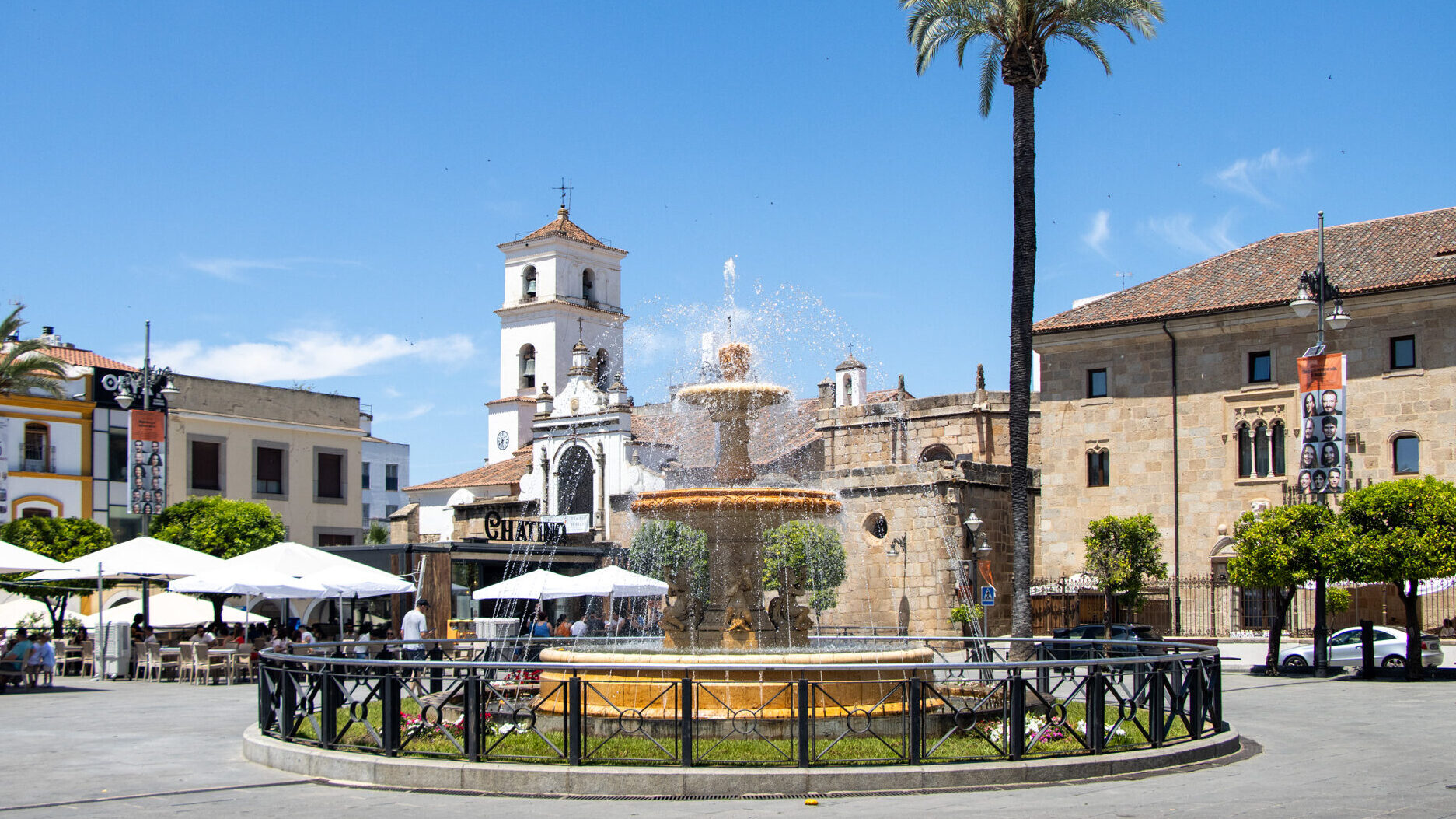
Even though it’s not a Roman site, adding Plaza de España to your list of things to do in Merida is a must. The plaza is surrounded by beautiful 19th century buildings and it’s home to Concatedral Metropolitana de Santa Maria. The plaza’s open layout made it perfect for social gatherings and markets in the past, and today visitors can still enjoy various cultural events and festivities taking place here. This is also a nice place to come to relax after a long day of walking around Merida, as there are many cafes and restaurants to enjoy.
Basilica de Santa Eulalia
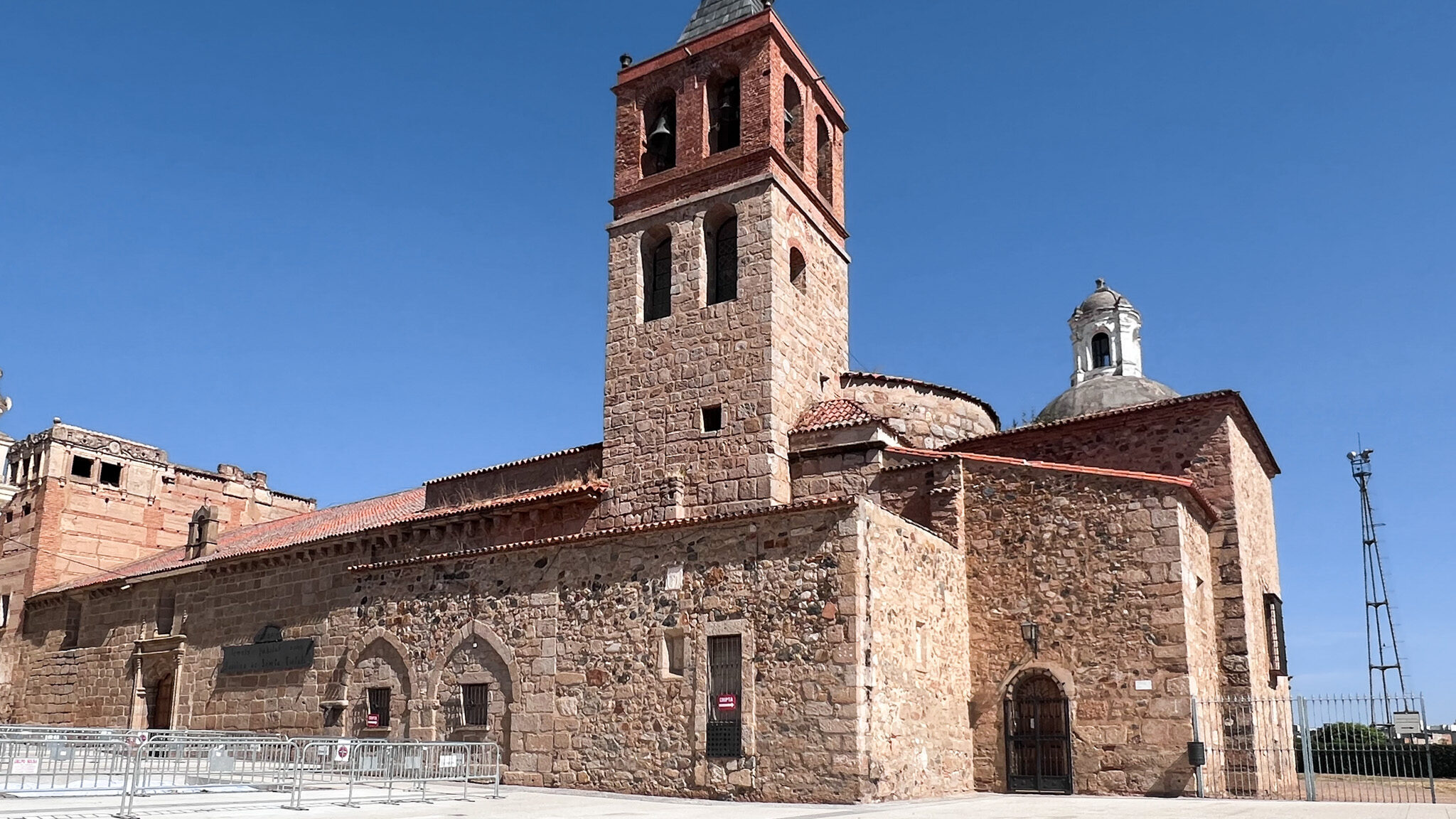
Basilica de Santa Eulalia was one of the first Christian temples built in the Iberian Peninsula during the Roman period. It was completed in the 4th century over the tomb of a Christian martyr, making it a very popular pilgrimage site in the Middle Ages. The unique layers of architecture found here tells the story of how important religion was in the area, from paganism to Christianity.
If you’ve purchased the Historical-Archaeological Ticket, you can access the crypt below the basilica for no additional charge. This is where you’ll find ancient altars, funerary structures, and interesting mosaics that have all been excavated and well-preserved. However, if you want to access the basilica, you’ll need to pay a small fee upon exit of the crypt, which can only be paid in cash.
Acueducto de los Milagros
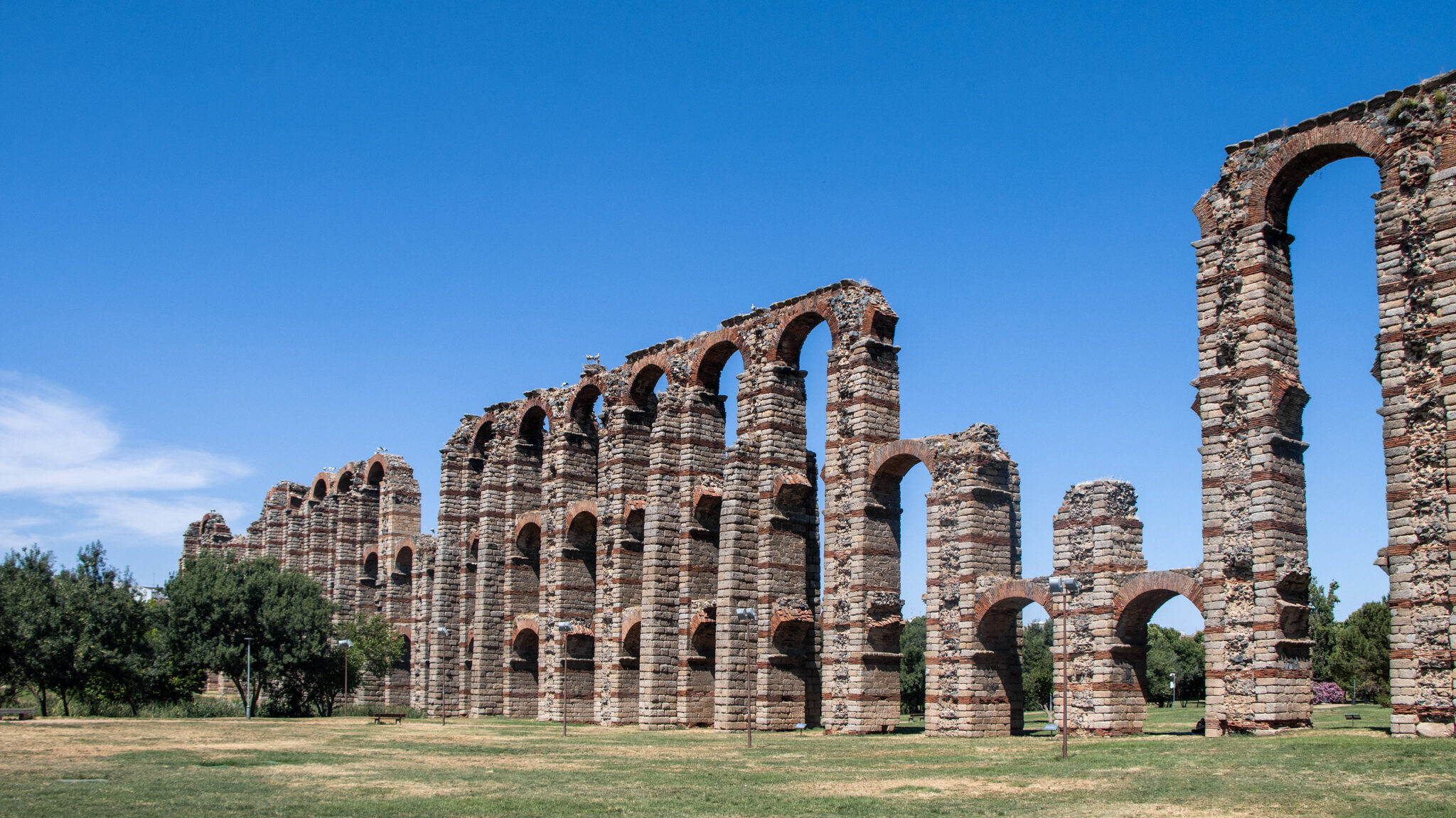
The list of things to do in Merida is a long one, especially in terms of ancient Roman history. One more Roman site to add to that list is Acueducto de los Milagros. This reservoir was built to bring water into the ancient city, and it’s been given the nickname “Aqueduct of the Miracles” due to its impressive state of preservation, even though it’s been abandoned for many centuries. The best section of the aqueduct is located in a tranquil park, and it’s free to access too.
Places to eat in Merida
Sibuya Urban Sushi Bar
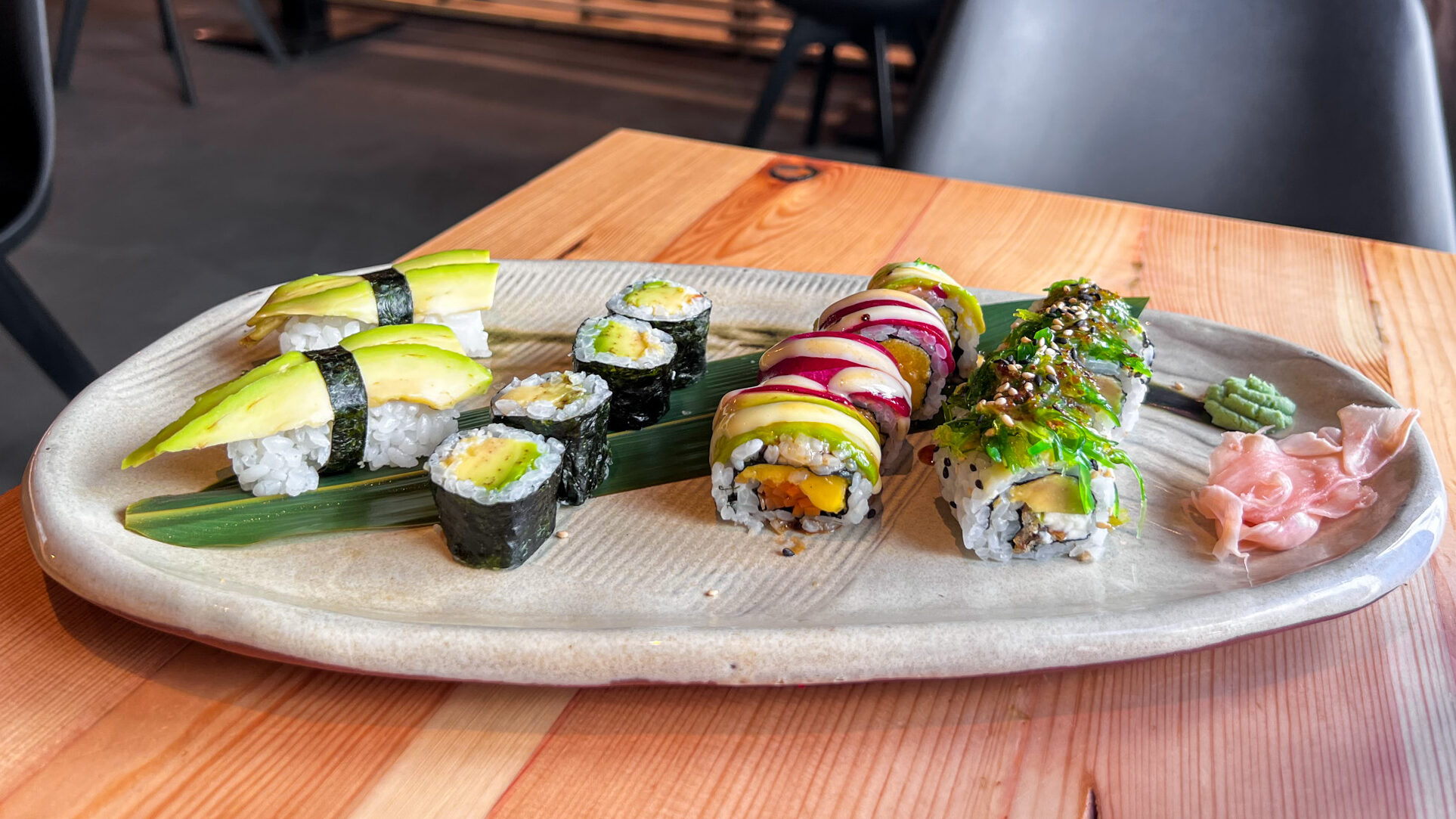
Sibuya Urban Sushi Bar is a great place to come for a quick lunch. This sushi restaurant in Merida is located in the heart of the historic city centre, with a menu that’s centred around Japanese fusion cuisine. They offer a lot of creative dishes, including several vegetarian sushi rolls that are made-to-order. This probably isn’t the cheapest place for sushi in Merida, but the high-quality ingredients they use make it worth spending that little bit extra for.
Heladeria Artesana Agustin Mira
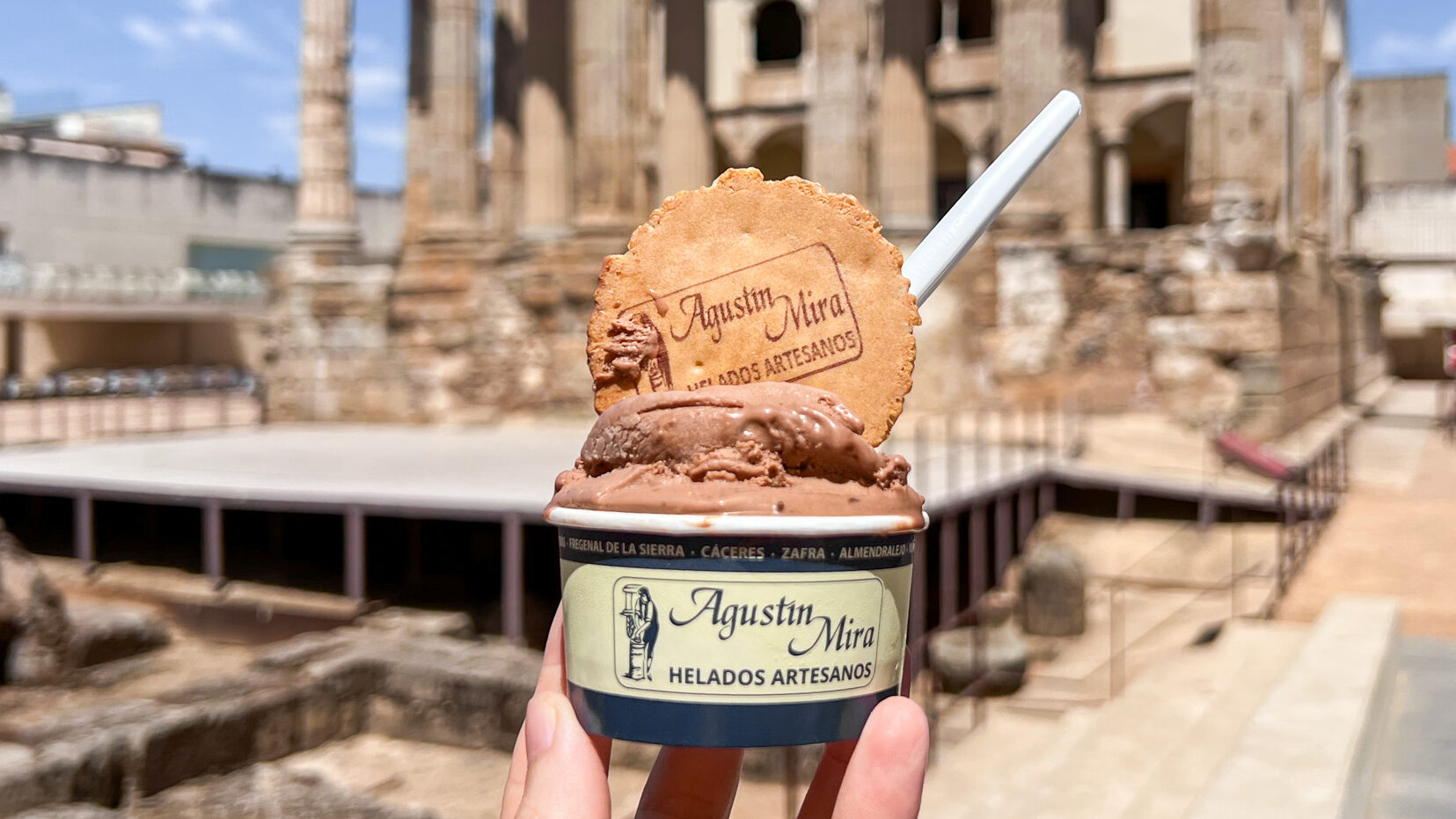
Sitting across from the Templo de Diana is Heladeria Artesana Agustin Mira. This iconic ice cream shop in Merida is known for its artisanal ice cream, and it’s a very popular place with the locals. There are a lot of ice cream flavours to choose from, ranging from classic flavours to seasonal ones. All of them are handmade using natural ingredients too, so the quality is amazing for the price you pay. I’d recommend enjoying your ice cream while taking in the beautiful view of Templo de Diana.
Floco Original Coffee
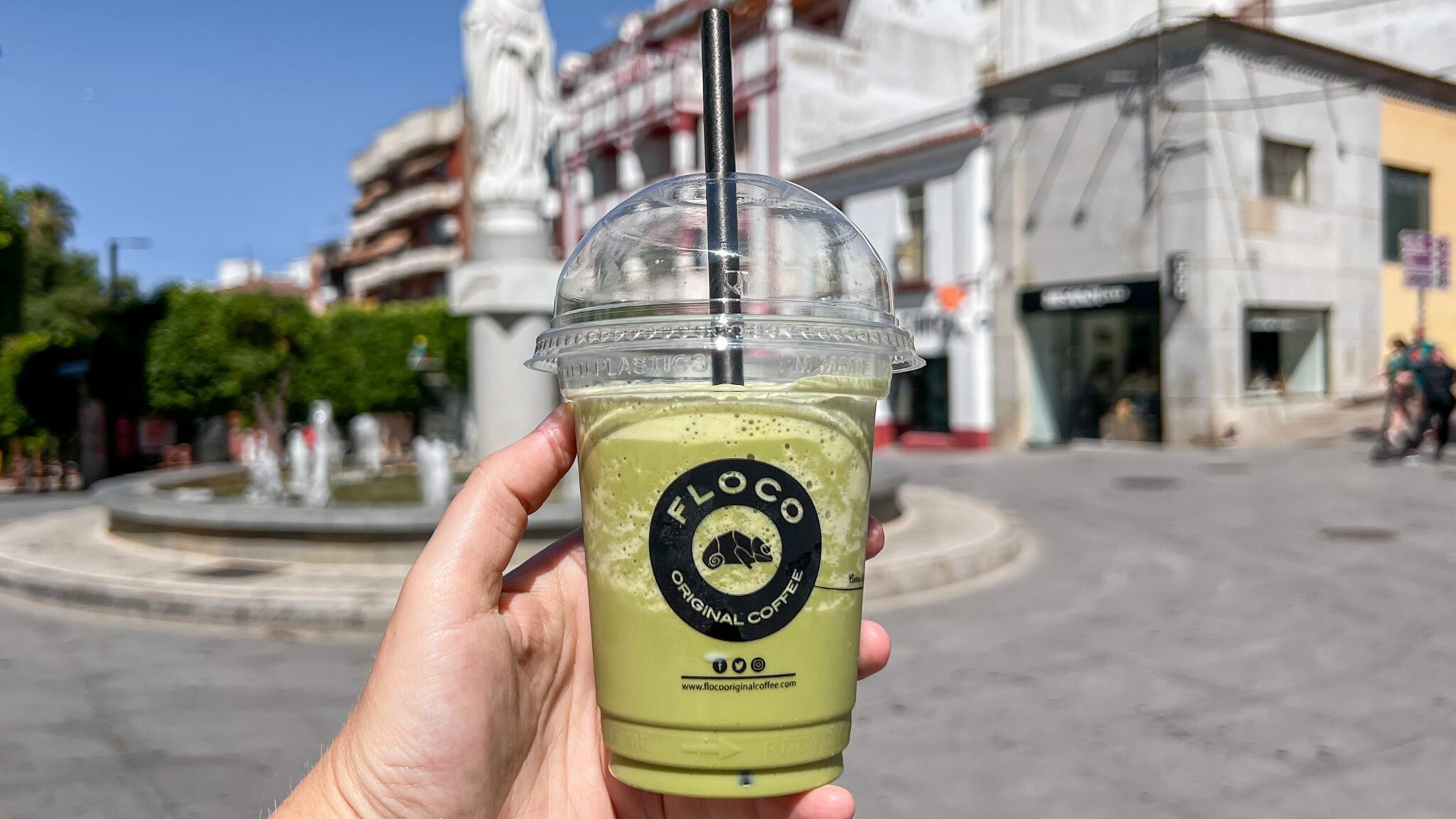
If you’re looking for somewhere local to grab a coffee or a snack from, Floco Original Coffee offers a modern twist on a traditional Spanish cafe. They have a menu centred around high-quality brewed coffee, as well as smoothie bowls, brunch dishes, and desserts. I ordered the iced matcha latte to go and was left very underwhelmed by the flavour, so maybe order something different than I did!
How many days to spend in Merida
There are a lot of incredible things to do in Merida for history enthusiasts, especially if you’re interested in learning more about the ancient Roman Empire’s impact on the Iberian Peninsula. I spent just one day in Merida, and although I managed to see all of the main attractions here, it was very tiring. I’d recommend spending at least two days in Merida if you can, so you can explore the historic sites at a more leisurely pace. If you’re visiting Merida in the summer, try to wake up as early as possible, because you’ll find the conditions midday are almost unbearable.
The province of Badajoz has a lot of other beautiful historic places just a short drive from Merida too. The small town of Zafra is worth visiting for half a day, and the city of Badajoz itself is very interesting with plenty o
If you have any questions about things to do in Merida, or you’d like to recommend something else to add to my list, please feel free to get in touch. You can reach out via email or by filling out the contact form on my website. Don’t forget to follow along with my travels on Instagram and TikTok too, where you’ll find more helpful travel tips.
This post may contain affiliate links, which means I may earn a commission from the discount codes used or when a link/ad is clicked. All purchases made will come at no extra cost to you, and I only include products and services that I would personally recommend.
Pin this blog post for later!
